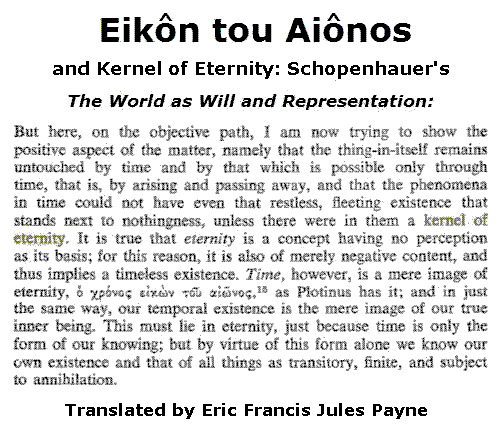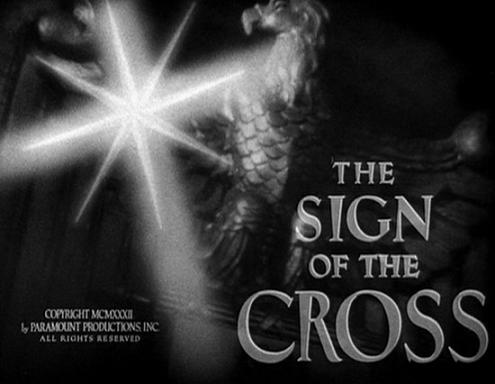Log24 entries --
Juneteenth through Midsummer Night, 2007
Sunday, June 24, 2007
12:07 AM
Primitive Roots:
Midsummer Night
in the Garden
of Good and Evil

"I Put a Spell on You"
-- Nina Simone,
title of autobiograpy
"The
voodoo priestess looked across the table at her wealthy client, a man
on trial for murder: 'Now, you know how dead time works. Dead time
lasts for one hour-- from half an hour before midnight to half an hour
after midnight. The half-hour before midnight is for doin' good. The
half-hour after midnight is for doin' evil....'"
-- Glenna Whitley, "Voodoo Justice," The New York Times, March 20, 1994
Robert Pirsig, Zen and the Art of Motorcycle Maintenance, 1974:
"But
what's happening is that each year our old flat earth of conventional
reason becomes less and less adequate to handle the experiences we have
and this is creating widespread feelings of topsy-turviness. As a
result we're getting more and more people in irrational areas of
thought... occultism, mysticism, drug changes and the like... because
they feel the inadequacy of classical reason to handle what they know
are real experiences."
"I'm not sure what you mean by classical reason."
"Analytic
reason, dialectic reason. Reason which at the University is sometimes
considered to be the whole of understanding. You've never had to
understand it really. It's always been completely bankrupt with regard
to abstract art. Nonrepresentative art is one of the root experiences
I'm talking about. Some people still condemn it because it doesn’t make
'sense.' But what's really wrong is not the art but the 'sense,' the
classical reason, which can't grasp it. People keep looking for branch
extensions of reason that will cover art's more recent occurrences, but
the answers aren't in the branches, they're at the roots."
"Let the midnight special
shine her light on me."

Saturday, June 23, 2007
6:00 PM
Tales from the Bully Pulpit:
Saturday, June 23, 2007
9:00 AM
In the Details, continued...
"As
though their knowledge of the quantum secrets came with the power of
prophecy, some three dozen of Europe's best physicists ended their 1932
meeting in Copenhagen with a parody of Goethe’s 'Faust.'....
It was only in retrospect that the silliness became profound. The
players were becoming possessors of 'a truth with implicit powers of
good and evil,' Gino Segrè writes in 'Faust in Copenhagen,' his
inventive new book about the era. And 'the devil... was in the
details.'" --George Johnson
Friday, June 22, 2007
2:22 PM
For Studio 60, a Bush Joke:
Thursday, June 21, 2007
9:57 PM
Time's whirligig spins, and...
Thursday, June 21, 2007
4:30 PM
Found in translation:

"Ich
aber, hier auf dem objektiven Wege, bin jetzt bemüht, das Positive der
Sache nachzuweisen, daß nämlich das Ding an sich von der Zeit und Dem,
was nur durch sie möglich ist, dem Entstehen und Vergehen, unberührt
bleibt, und daß die Erscheinungen in der Zeit sogar jenes rastlos
flüchtige, dem Nichts zunächst stehende Dasein nicht haben könnten,
wenn nicht in ihnen ein Kern aus der Ewigkeit*
wäre. Die Ewigkeit ist freilich ein Begriff, dem keine Anschauung zum
Grunde liegt: er ist auch deshalb bloß negativen Inhalts, besagt
nämlich ein zeitloses Dasein. Die Zeit ist demnach ein bloßes Bild der
Ewigkeit, ho chronos eikôn tou aiônos,** wie es Plotinus***
hat: und ebenso ist unser zeitliches Dasein das bloße Bild unsers
Wesens an sich. Dieses muß in der Ewigkeit liegen, eben weil die Zeit
nur die Form unsers Erkennens ist: vermöge dieser allein aber erkennen
wir unser und aller Dinge Wesen als vergänglich, endlich und der
Vernichtung anheimgefallen."
* "a kernel of eternity"
** "Time is the image of eternity."
*** "wie es Plotinus hat"--
Actually, not Plotinus, but Plato,
according to Diogenes Laertius.
Related material:
Time Fold,
J. N. Darby,
"On the Greek Words for
Eternity and Eternal
(aion and aionios),"
Carl Gustav Jung, Aion,
which contains the following
four-diamond figure,

and Jung and the Imago Dei.
Thursday, June 21, 2007
12:07 PM
Structural Logic continued:
"His graceful accounts of the Bach Suites for Unaccompanied Cello
illuminated the works’ structural logic as well as their inner
spirituality."
--Allan Kozinn on Mstislav Rostropovich in The New York Times, quoted in Log24 on April 29, 2007
"At that instant he saw, in one blaze of light, an image of unutterable
conviction.... the core of life, the essential pattern whence all other
things proceed, the kernel of eternity."
-- Thomas Wolfe, Of Time and the River, quoted in Log24 on June 9, 2005
"...
the stabiliser of an octad preserves the affine space structure on its
complement, and (from the construction) induces AGL(4,2) on it. (It
induces A8 on the octad, the kernel of this action being the translation group of the affine space.)"
-- Peter J. Cameron, "The Geometry of the Mathieu Groups" (pdf)
"... donc Dieu existe, réponse!"
"Only gradually did I discover
what the mandala really is:
'Formation, Transformation,
Eternal Mind's eternal recreation'"
(Faust, Part Two, as
quoted by Jung in
Memories, Dreams, Reflections)

"Pauli as Mephistopheles
in a 1932 parody of
Goethe's Faust at Niels Bohr's
institute in Copenhagen.
The drawing is one of
many by George Gamow
illustrating the script."
-- Physics Today
"Borja
dropped the mutilated book on the floor with the others. He was looking
at the nine engravings and at the circle, checking strange
correspondences between them.
'To meet someone' was his
enigmatic answer. 'To search for the stone that the Great Architect
rejected, the philosopher's stone, the basis of the philosophical work.
The stone of power. The devil likes metamorphoses, Corso.'"
-- The Club Dumas, basis for the Roman Polanski film "The Ninth Gate" (See 12/24/05.)
"Pauli linked this symbolism
with the concept of automorphism."
-- The Innermost Kernel
(previous entry)
And from
"Symmetry in Mathematics
and Mathematics of Symmetry"
(pdf), by Peter J. Cameron,
a paper presented at the
International Symmetry Conference,
Edinburgh, Jan. 14-17, 2007,
we have
The Epigraph--

(Here "whatever" should
of course be "whenever.")
Also from the
Cameron paper:
Local or global?
Among other (mostly more vague) definitions of symmetry, the dictionary will typically list two, something like this:
• exact correspondence of parts;
• remaining unchanged by transformation.
Mathematicians
typically consider the second, global, notion, but what about the
first, local, notion, and what is the relationship between them? A
structure M is homogeneous if every isomorphism between finite substructures of M can be extended to an automorphism of M; in other words, "any local symmetry is global."
|
Some Log24 entries
related to the above politically
(women in mathematics)--
Global and Local:
One Small Step
and mathematically--
Structural Logic continued:
Structure and Logic (4/30/07):
This entry cites
Alice Devillers of Brussels--

"The aim of this thesis
is to classify certain structures
which are, from a certain
point of view, as homogeneous
as possible, that is which have
as many symmetries as possible."
"There is such a thing
as a tesseract."
-- Madeleine L'Engle
Wednesday, June 20, 2007
1:06 AM
ART WARS continued:
Kernel
Mathematical Reviews citation:
MR2163497 (2006g:81002) 81-03 (81P05)
Gieser, Suzanne The innermost kernel. Depth psychology and quantum physics. Wolfgang Pauli's dialogue with C. G. Jung. Springer-Verlag, Berlin, 2005. xiv+378 pp. ISBN: 3-540-20856-9
A quote from MR at Amazon.com:
"This revised translation of a Swedish Ph. D. thesis in philosophy
offers far more than a discussion of Wolfgang Pauli's encounters with
the psychoanalyst Carl Gustav Jung.... Here the book explains very well
how Pauli attempted to extend his understanding beyond superficial
esotericism and spiritism.... To understand Pauli one needs books like
this one, which... seems to open a path to a fuller understanding of
Pauli, who was seeking to solve a quest even deeper than quantum
physics." (Arne Schirrmacher, Mathematical Reviews, Issue 2006g)
An excerpt:
I
do not yet know what Gieser means by "the innermost kernel." The
following is my version of a "kernel" of sorts-- a diagram well-known
to students of anthropologist Claude Levi-Strauss and art theorist Rosalind Krauss:
The four group is also known as the Vierergruppe or Klein group. It appears, notably, as the translation subgroup of A, the group of 24 automorphisms of the affine plane over the 2-element field, and therefore as the kernel of the homomorphism taking A to the group of 6 automorphisms of the projective line over the 2-element field. (See Finite Geometry of the Square and Cube.)
Tuesday, June 19, 2007
3:17 PM
Meta Physics continued:
Faustus is gone:
regard his hellish fall
-- Marlowe
I have just read, in the New York Times Book Review that arrived in yesterday's mail, a review of Segre's Faust in Copenhagen. The review, on news stands next Sunday, was titled by the Times "Meta Physicists."
On Faust-- today's noon entry and yesterday's "Nightmare Lessons."
On "Meta Physicists"-- an entry of June 6, on Cullinane College, has a section titled "Meta Physics."
On Copenhagen-- an entry of Bloomsday Eve, 2004 on a native of that city.
Another Dane:
"Words, words, words."
-- Hamlet
Another metaphysics:
"317 is a prime,
not because we think so,
or because our minds
are shaped in one way
rather than another,
but because it is so,
because mathematical
reality is built that way."
-- G. H. Hardy,
A Mathematician's Apology
Tuesday, June 19, 2007
1:00 PM
Timing, Part III:
Tuesday, June 19, 2007
12:00 PM
Timing, Part II:
Let Noon Be Fair
-- Title of a novel
by Willard Motley
A review of Helene Cixous's Three Steps on the Ladder of Writing:
"Cixous
explores three distinct 'schools' that produce what she envisions as
great writing-- the Schools of the Dead, of Dreams, and of Roots.
Cixous invests much weight in the purposefully ambiguous nature of the
word 'school'; she seems to refer to a motivation, conscious or
unconscious, that directs, influences, and shapes writing; at other
times she seems to want to speak of actual places from whence we get
instruction (again, consciously or unconsciously)."
From Under the Volcano, by Malcolm Lowry, 1947, Chapter I:
Faustus is gone: regard his hellish fall --
"Shaken, M. Laruelle replaced the book on the table... he reached to
the floor for a folded sheet of paper that had fluttered out of it. He
picked the paper up between two fingers and unfolded it, turning it
over. Hotel Bella Vista, he read."
From The Shining, Chapter 18:
"In
1961 four writers, two of them Pulitzer Prize winners, had leased the
Overlook and reopened it as a writers' school. That had lasted one
year.... Every big hotel has got a ghost. Why? Hell, people come and go.... (In the room the women come and go)" --Quoted in Shining Forth

Photo: jewishbookweek.com
Jacques Derrida and Helene Cixous
Time of this entry:
Noon.
Tuesday, June 19, 2007
11:49 AM
Timing, Part I:
Let No Man Write
My Epitaph
-- Title of a novel
by Willard Motley
"Recall
the passage in the Odyssey when he [Ulysses] encounters the Cyclops
Polyphemos. Trying to disguise himself, to hide himself, Ulysses calls
himself Outis-- nobody, no man, personne. Here, in a strategy of simple
erasure, the Subject masks his singularity behind no one, das Man (here
in a sense that does not depend on the Heidggerian distinction between
the authentic Dasein and the inauthentic das Man). In French, Outis is
translated as personne, meaning no one, no particular subject."
-- Jacques Derrida, "Summary of Impromptu Remarks," pp. 39-45 in Anyone, ed. by Cynthia Davidson (New York: Rizzoli International, 1991)
"In A GOOD YEAR, more than one reference is made to the secret of comedy. It's all in the timing, two characters explain." --Review at epinions.com
















